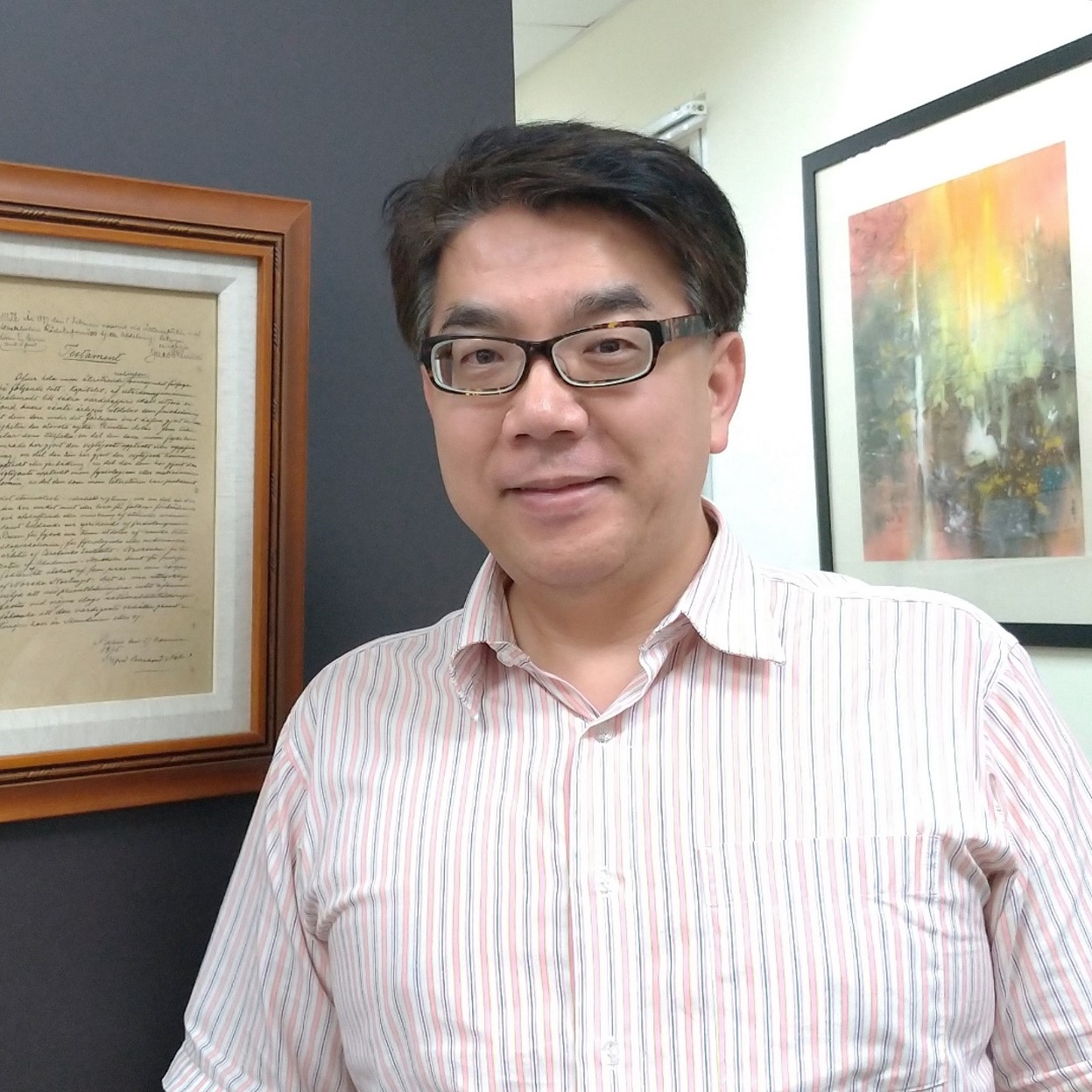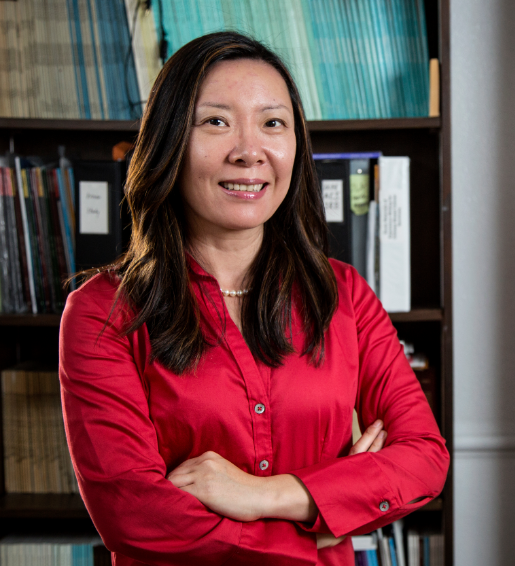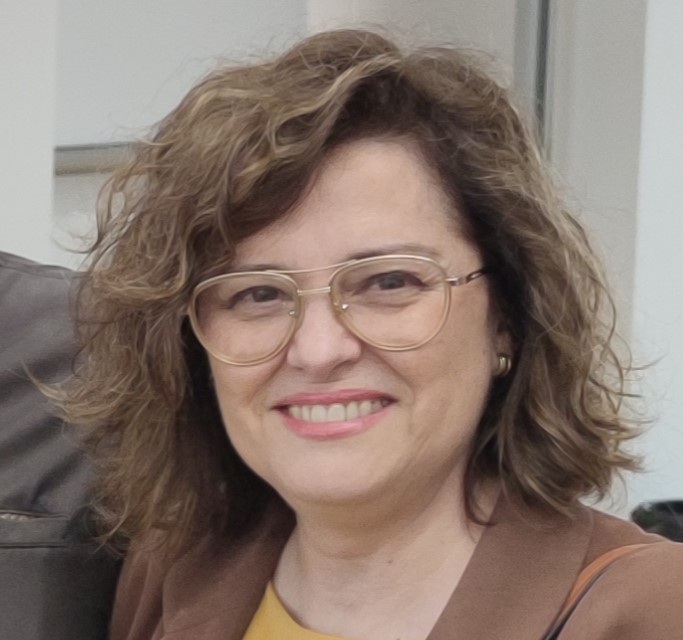Invited Speakers
Prof. Eugen Gheorghiu
Director, International Centre of Biodynamics, RomaniaUniversity of Bucharest, Romania
Speech Title: Rapid phenotypic antimicrobial susceptibility testing by gauging cellular response at population level -via magnetophoretically assisted electrical impedance spectroscopy assay, in comparison to analysis of (single) cells dynamics using electrically modulated optical microscopy
Abstract: We aim at advancing an effective setup for rapid phenotypic Antimicrobial Susceptibility Testing (AST) and discuss the analysis performed at population versus single cell levels. Electrical Impedance Spectroscopy (EIS) is commonly used for functional characterization of living cells. EIS allows direct assessment of membrane integrity and, as such, of the cellular viability status. While entire cellular population can be electrically addressed at once, single-cell EIS analysis is provided either by Impedance Cytometry or by label-free Electrically Modulated Light Microscopy. However, only the latter allows analysis of (single) cell cycle dynamics alterations due to drug exposure. For rapid capturing and concentrating microbial cells from biological samples, we have developed a proprietary immuno-magnetic cell separation assay capable of expediting analyses either merely by EIS, as well as by electrically actuated optical microscopy. Whereas EIS analysis of a cluster (population) of magnetically tagged microorganisms allowed phenotypic AST in just 15 minutes, for thorough assessment of heterogenous microbial cell response to antimicrobials, single-cell assays have to be performed. Adding AC electrical actuation to light microscopy provides label-free, high-resolution images of both optical path and electrical impedance of living cells. These maps relate to the distribution of the refractive index and conductivity, as complementary intrinsic cellular parameters and imaging contrast elements. This multimodal method provides new capabilities for determining both electrical and optical structures of (microbial) cells and their dynamic changes per se, or in response to exposure to antimicrobial drugs. Our presentation will highlight our recent developments in: (1) cell separation, (2) in-situ AST assessment based on EIS fingerprint of magnetically tagged microbial cells as well as (3) of analysis of (single) cell cycle dynamics changes, and related heterogeneities, revealed by Electrically Modulated Light Microscopy. We will emphasize the complementarity between optical (refractive index) and electrical (conductivity) maps/images especially concerning the viability status.
Keywords: EIS, electro-optical microscopy, phenotypic antimicrobial susceptibility testing, electrical and structural fingerprint
Biography: Prof. Eugen Gheorghiu graduated (Bio)Physics at the University of Bucharest, then worked on: (1) developing microscopic models on the dielectric behavior of (non)spheroidal living cells, (2) analyzing cell cycle progression using non-linear modelling, to receive his Ph.D. in theoretical physics with Prof Aureliu Sandulescu in 1994. He then established the biophysics lab within the National Institute of Biotechnology in Bucharest. He was a JSPS fellow at Kyoto University (1996-1997), then established the International Centre of Biodynamics, under UNESCO. During 2003-2009 he coordinated the Master Programme in Biodynamics, within the University of Bucharest, since 2004- he is PhD Advisor, University of Bucharest. His long-standing research interests span developments of electrically modulated optical assays supporting non-invasive analysis of living cell dynamics (per se and exposed to drugs), rapid detection of markers in blood (using portable, multichannel SPR systems), fast point-of-care methods and devices for: (a) sensitive identification & quantitation of microbes, and (b) Phenotypic Antibacterial & Antifungal Susceptibility/Resistance Testing based on immune-magnetic capture, magnetophoresis and electro-optical fingerprinting. He is first author of over 10 international and Romanian patents, and corresponding author of over 50 papers, a recent land-mark relates to high-resolution mapping of the electrical impedance and optical path at nanoscale, based on quantitative phase imaging combined with electrical actuation, reported in Nature-LSA (2021).
Prof. Mihaela Gheorghiu
Head of Biosensing Department, International Centre of Biodynamics, RomaniaUniversity of Bucharest, Romania
Speech Title: Advanced cellular platform for cytotoxicity testing based on high content label free assessment of cellular dynamics provided by electro-optical assays
Abstract: Quantitation of cell dynamics is a prerequisite for demanding cell based biosensing applications related to cytotoxicity testing.
We take the challenge to advance a novel cellular sensing assay with boosted sensitivity and reproducibility for evaluating cytotoxicity of novel drugs and bio-materials. The dynamics of the: distribution of electro-optical cellular parameters (refractive index, and electrical conductivity), membrane permeability, cell-surface and cell-cell interaction were chosen as reporter processes. This work is connected with radically new support concepts recently developed associated with improved bio-sensing capability of dynamic control of electrified bio-interfaces’ response to an exogenous rhythm in cell-based platforms.
We present a multimodal, label free, high spatial resolution and low temporal noise functional imaging instrument enabling high resolution optical and electrochemical mapping - the latter beyond the limitations of electrode-based technologies (surface or scanning ones). It exploits the electrical modulation of the refractive index of a tailored (sensing) interface and of live cells, via an externally applied sinusoidal voltage to provide label free electric contrast of adhered and hydrogel matrix incorporated model eukaryotic cells. This enables high content label free assessment of cell parameters and is capable to provide electrical, morphological and structural properties of cellular structures dynamics relevant for toxicity evaluation.
We highlight the virtues and challenges of this novel opto-electrochemical method as an enabling tool for live cells analysis when undergoing toxic and cytopathic effects or in response to a model drug (a last resort antibiotic) presented as a case study.
The unique detection characteristics of this cellular platform are essential for applications in the fields of cell signalling, drug screening and hazard evaluation.
Reference support work US Patent US 11,680,939 B2; Anal. Chem, (2020), DOI: 10.1021/acs.analchem.9b03217; Light Sci Appl (2021) 10.1038/s41377-020-00461-x
Keywords: advanced cell based biosensing, label free electro-optical imaging, toxicity testing.
Acknowledgements: This research is supported by The Romanian Ministry for Education and Research, grant BioSense, PNRR-III-C9-2023-I8, contract CF129-31.07.2023.
Biography: Research Prof. Mihaela Gheorghiu is the head of the Biosensing Department of the International Centre of Biodynamics, Bucharest, Romania and PhD thesis advisor within the University of Bucharest (Biology Doctoral School). Physicist by formation, BSc Physics and MSc in Biophysics at the University of Bucharest (1994, and 1995 respectively), she obtained her PhD in 2003 and Habilitation in 2019 in Biology, University of Bucharest. She is the recipient of several fellowships such as of the Eastern Europe Research Scientists & Students Exchange & Collaboration Programme National University Singapore, at the Department of cell physiology, Catholic University Leuven, Belgium for postdoctoral stages, and of Boehringer Ingelheim, Research stage at Institute for Molecular Biotechnology, Jena, Germany, as well as of the Grigore Antipa Award of the Romanian Academy (in 2022). Her work combines engineering, modelling and biochemical tools for advancing electro-optical analytical platforms of cellular dynamics and of the effects triggered by various stimuli (as well as drug candidates) at single cell level. Prof Gheorghiu expertise covers the analysis of both homogenous and heterogenous cultures, encompassing prokaryotic (e.g., bacteria) and eukaryotic cells (including opto-genetically engineered ones).
Prof. Jim Jinn-Chyuan Sheu
Institute of BioMedical Sciences, National Sun Yatsen UniversitySpeech Title: The Impacts of Genetic Alterations in Cytoskeleton-Related Genes on Cell Fate Determination and Cancer Development
Abstract: The dynamics of cytoskeletal networks regulate numerous cellular processes through mechanotransduction, thereby influencing tissue development and homeostasis. Although alterations in cytoskeleton-related genes are frequently observed in cancer tissues, their roles in cancer development have received limited attention. Emerging evidence supports the involvement of mechanotransduction in the regulation of stemness formation and cell differentiation, suggesting that mutations in key cytoskeletal components can alter the physical and mechanical properties of cells. These changes may, in turn, affect transcriptional regulation, metabolism reprogramming, and the processes involved in cancer cell selection and evolution. Using a genome-wide approach, we analyzed genetic alterations in cytoskeletal proteins and their associated regulators across multiple cancer types. We further discuss the genetic features identified and their contributions to oncogenic signaling pathways. Given that cancer develops within a three-dimensional microenvironment, we also examine the direct impacts of these alterations on cell-cell and cell-matrix interactions, as well as on cytoskeletal architecture in the surrounding stromal cells, which ultimately contribute to tumor microenvironment remodeling. Our findings underscore the significant role of aberrant cytoskeletal networks as drivers of oncogenic signaling, cell transformation, and malignant progression. These insights offer new rationales and opportunities for developing targeted therapeutic strategies against cancer.
Keywords: genetic alterations, cytoskeleton, mechanotransduction, cell fate, cancer development, tumor microenvironment remodeling
Biography: Dr. Jim J.-C. Sheu is a molecular biologist specializing in the identification and functional characterization of novel cancer driver genes through genome-wide approach. His areas of expertise include cancer genomics and genetics, malignant transformation, mechanobiology, cancer dormancy and reactivation, and neuro-oncology. In recent years, Dr. Sheu's team was the first to provide molecular evidence demonstrating the existence and novel functions of keratin fusions in cancer. This groundbreaking discovery highlights that genetic alterations in cytoskeletal genes may serve as cancer-driving events rather than merely consequences of cancer cell evolution. In recognition of his contributions to cancer biology, Dr. Sheu received the prestigious Wu-Da-You Memorial Award in 2014. He was also recognized among the Top 5% of Biomedical Researchers Worldwide by a Sparrho study in 2016.
Prof. Qian Lu
Department of Health Disparities Research, Division of Cancer Prevention and Population Sciences, The University of Texas MD Anderson Cancer Center, USASpeech Title: When Words Heal: AI, Expressive Writing, and the Power of Diverse Voices
Biography: Dr. Qian Lu is a Professor in the Department of Health Disparities Research at the University of Texas MD Anderson Cancer Center. She is deeply committed to advancing health equity and eliminating disparities across the cancer prevention and control continuum through rigorous intervention research, education, training, and collaborations with underserved communities.
Dr. Lu's work centers on creating brief, scalable, and resource-efficient behavioral interventions, such as expressive writing and narrative videos, as well as multilevel strategies addressing social determinants of health, including peer support and access. Her research primarily serves understudied and underserved populations, including ethnic minorities, young adults, rural populations, individuals with low socioeconomic status, and the uninsured.
A leading expert in cancer disparities and survivorship research, Dr. Lu has pioneered innovative psychosocial interventions to help cancer patients and survivors navigate their journeys and improve their quality of life. She conducted the first behavioral trial to enhance the quality of life for Asian American cancer survivors and evaluated the first peer mentor program for ethnic minority survivors. Additionally, she spearheaded a multilevel intervention aimed at increasing HPV vaccination uptake among young adults.
Dr. Lu has received continuous extramural funding since 2007 from various sources. Her work has garnered multiple ongoing grants from the United States National Cancer Institute and the American Cancer Society, supporting her research to improve quality of life and promote cancer preventive behaviors in underserved communities.
Prof. Soraya L. Valles
Department of Physiology, School of medicine, University of Valencia, SpainSpeech Title: Function of glia in the nervous system. Future of the research in brain
Abstract: Nervous System (NS) is formed by different neural cells, such as astrocytes, neurons and oligodendroglia in the central nervous system (CNS) and swan cells in the peripheric NS. Neurons are speciality cells that communicate each other and with all body cells. Oligodendroglia and Swan cells, are productors of myeline in the CNS and in peripheric NS respectively. Astrocytes are special cells in the NS with many functions, such as fooding the neurons and myeline productor cells with glucose; elimination of glutamate in synapsis; constituent of blood brain barrio (BBB); productor of cytokines and chemokines to control inflammation; take care of the microbiota; elimination bacteria and virus no autochthon inside the NS; have a role in memory and learning producing long and short term potentiation; pass to reactive astrocytes to protect neurons, oligodendroglia and swan cells; form a plate in the CNS when is broken to evite the communication between cells to protect NS from bacteria and virus. Furthermore, astrocytes control toxic action of Aβ peptide and plates in Alzheimer’s disease; control insulin receptor and increase pAKT to decrease GSK-3 activating GS (glutamate synthase) to eliminate glucose inside the cells and, of course reduce pTAU; increase IDE (inhibitor of degrading enzyme) that decrease insulin and Aβ; because noradrenalin can unit to its receptor and, to Aβ too producing GSK-3, astrocytes diminish the increase of pTAU production. All these demonstrate than astrocytes can be the more important cells in our nervous system.
Keywords: Neurons; Astrocytes; oligodendroglia; ATP increase; IDE; GSK-3; pTAU; Aβ peptide; BBB; CNS; PNS; learning; memory.
Acknowledgements: “Fineurol group”
Biography: In 1985, Prof. Valles graduated in Biological Science at the University of Valencia and in 1996 I finished my PhD in the Cytological Research Institute (IEC) looking for astrogliogenesis during brain development. In 1997, I spent three years at Hallamshire Hospital, Sheffield, UK, working in inflammation and regulation of IL-1 and IL-1 receptor. In 2000, I returned to Spain at Department of Physiology, Faculty of Medicine in University of Valencia until now. I was working in toxicity in developmental and neurodegenerative disease (such as Alzheimer’s disease) looking for oxidative stress and inflammation mechanisms. Actually, I have my own laboratory “FINEUROL” and I am working in neurodegeneration and neurodevelopment. I have lectures in the School of Medicine as a Professor.





